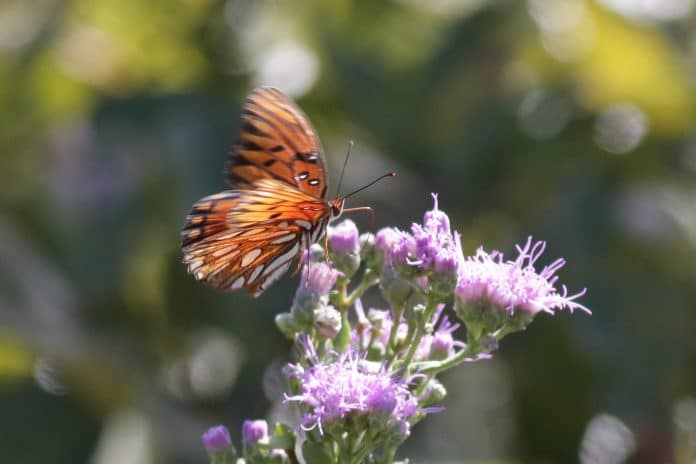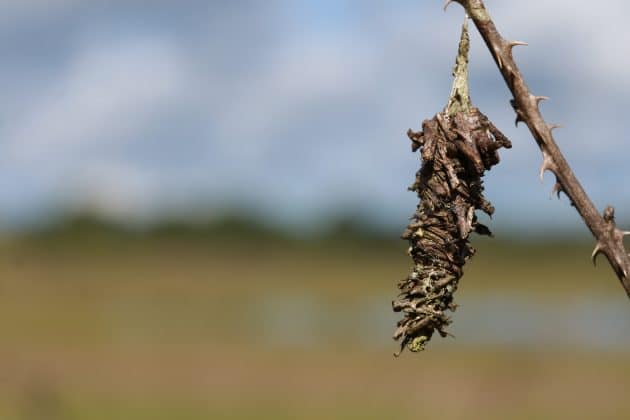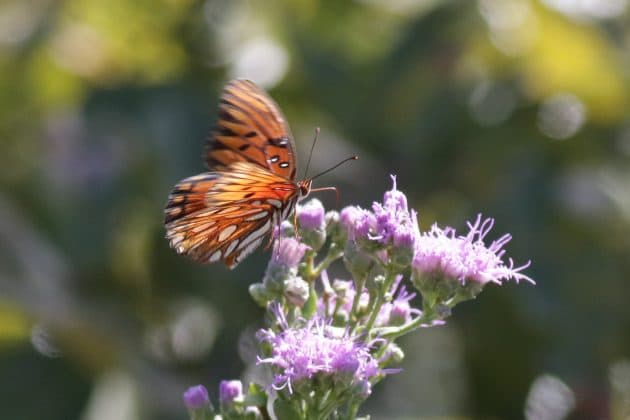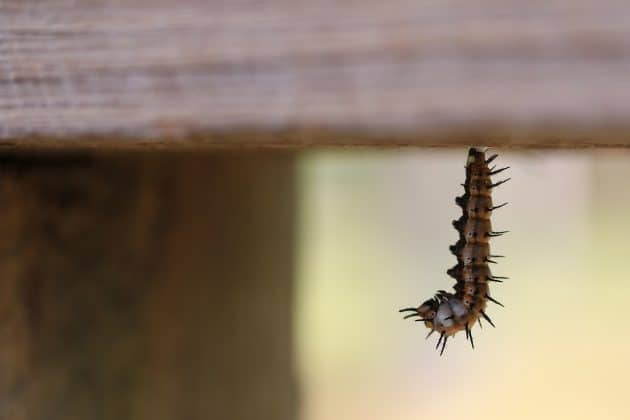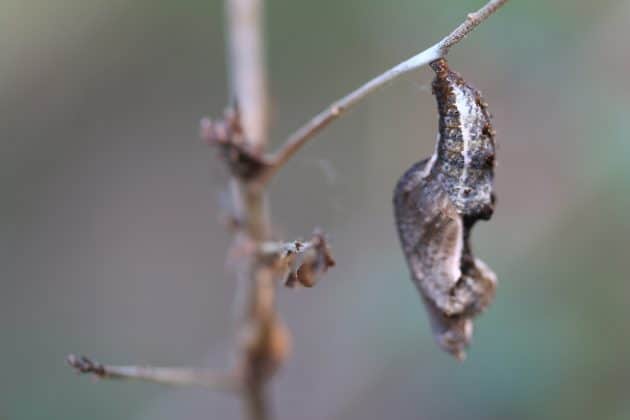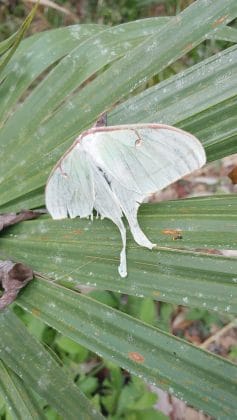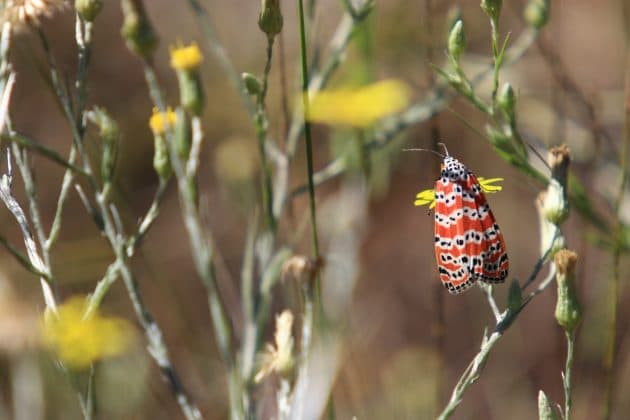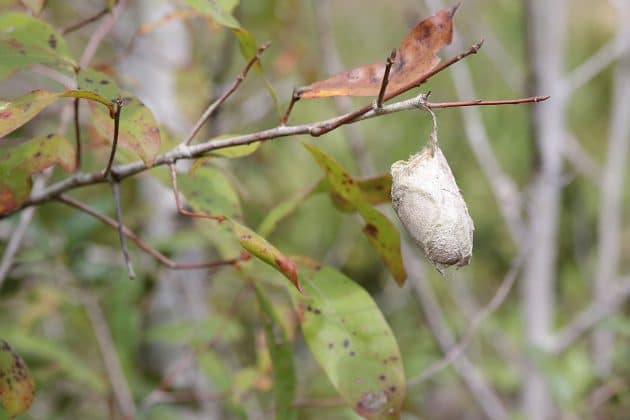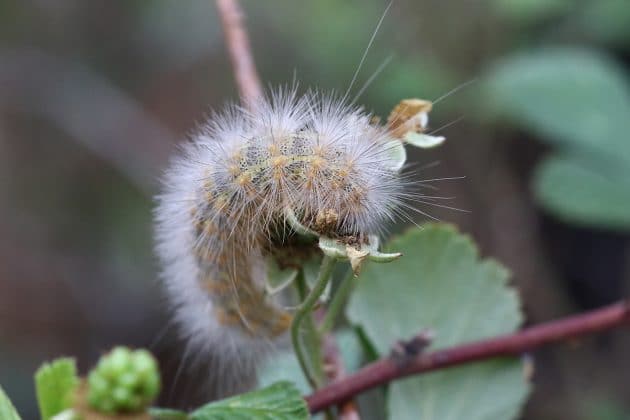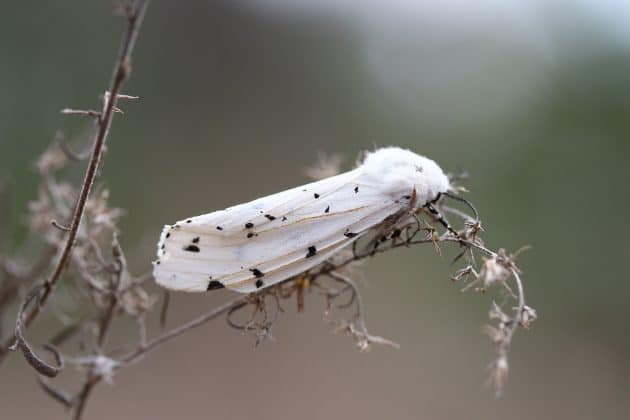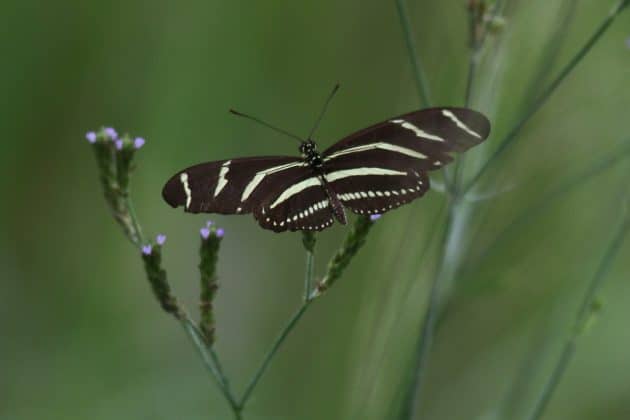Spring is in the air, and to help celebrate the season, let’s look at two very important types of insects: butterflies and moths.
Timing is everything when it comes to flowering plants and insects. If the temperature gets too warm early in the spring, some insects will emerge too soon, and there may not be enough nectar to support them.
Butterflies and Moths
Butterflies and moths are both insects classified within the order Lepidoptera. They come in all different shapes, sizes, and colors. Some may be as big as the palm of your hand, and others can be an inch in width. Their wing shapes can vary for both the butterflies and moths and their colors can be as bright as the rainbow or dull to avoid predators.
Do you know which one of the 200 species of butterflies in Florida is the state butterfly? If you answered Zebra Longwing, you are correct!
Many people ask, what’s the difference between a butterfly and a moth? You would be half right if you answered that butterflies are day fliers and moths are night fliers.
Contrary to belief, some species of moths thrive during the day, for example, the Ornate Bella moth. But there are other differences between the two, including physical appearance and behavior.
The tip of the butterfly’s antenna is clubbed or hooked. The antennas of a moth are feathery and have a comb-like or thread-like appearance. Butterflies have mouths (proboscis), and some moths do not. Wait, what? Some moths do not eat at all? Yes, that is correct, and I’ll explain that further in this article.
First, all butterflies (rhopalocera) and moths (heterocera) go through complete metamorphosis, transforming from one thing into another. From an egg laid by a female moth or butterfly, the larval form emerges called a caterpillar. This stage of their life cycle is super dramatic. How can a caterpillar change into a butterfly or moth? How can they change six pairs of tiny little legs into six long skinny legs? How did they grow wings? There are so many more questions. But get this, all this changing (metamorphosis) is completely done within this specially designed case. For a butterfly, it’s called a chrysalis which actually is a measure of their own body, and a moth weaves a cocoon from the silk they produce to protect them in their pupa stage.
The Butterfly Life Cycle
Egg-Caterpillar-Pupa-Butterfly
The beginning of the lifecycle is the fertilized egg, which the adult female deposits on a food source. In the case of monarchs- that would be the milkweed plant. The eggs hatch and larva emerge- called caterpillars in the order Lepidoptera which includes both moths and butterflies. The caterpillar typically goes through four growth and molting stages called instars.
A caterpillar must eat, eat and eat. After filling its body with all the nutrients it needs, it finds a perfect little spot to settle down. At this time is when the caterpillar produces ecdysone, a steroid hormone that controls molting in insects and other arthropods. It’s sort of like how a snake sheds its skin. The hormone helps the caterpillar create a hard outer shell called a chrysalis.
Now what happens next is weird, really weird. The caterpillar releases an enzyme called caspases. Caspases control cell death (apoptosis).
Basically, the enzymes are dissolving the tissues, muscles, digestive system, and other organs of the caterpillar, but the enzymes do not dissolve its breathing tubes; this whole thing is super complex for sure but for butterflies, it’s a crucial step in metamorphosis.
Caterpillars have specialized cells called imaginal discs. Each disc has a special task and is specifically designed to create a particular part of the butterfly. These discs stay dormant until the caterpillar begins its transformation. It’s like building a butterfly with dots!
Within the chrysalis, all this creation and transformation is going on. It will be around four days until its digestive system, and other organs are formed. After two weeks, its eyes, legs, wings, and other essential parts are formed. When the metamorphosis is complete, the butterfly is ready to break out of its chrysalis and do what butterflies do best- fly, drink nectar, pollinate, mate, and lay eggs to start the entire cycle all over again.
Differences in the moth life cycle
Moths have a similar lifecycle to butterflies with four distinct stages. What makes them different from butterflies is that moths create silken cocoons, not chrysalis. Caterpillars make their cocoons from strands of silk that they produce from glands near their mouths. Usually, the caterpillar will wrap and spin its cocoon using a leaf. Some moths do not create their cocoon clinging to a branch or twig but dig holes underground. The cocoon of a hummingbird moth hides under leaf litter.
Some species are night fliers, and some are day fliers, and some species do not even have a proboscis (how insects drink to gather nutrients)!
Luna, Polyphemus, Atlas, Prometheus, Cecropia moths do not have a proboscis, and because of that, they are very short-lived. Their primary purpose as a moth is to find a mate. While the female moth produces a unique scent called pheromone, the males use their feathery-like antennas to pick up her scent.
————————
Did you know that moths have evolved ear-like organs which may help them hear high-frequency squeaks of the bats? Because moths are a bat’s favorite nighttime snack, they have acquired the ability to elude bats by being able to hear ultrasonic hunting calls produced from this winged nocturnal predator.
—————————
These beautiful and colorful insects are an essential part of nature, and because of the short time they have in nature, it’s important to be mindful of them. Enjoy their beauty and appreciate them.

